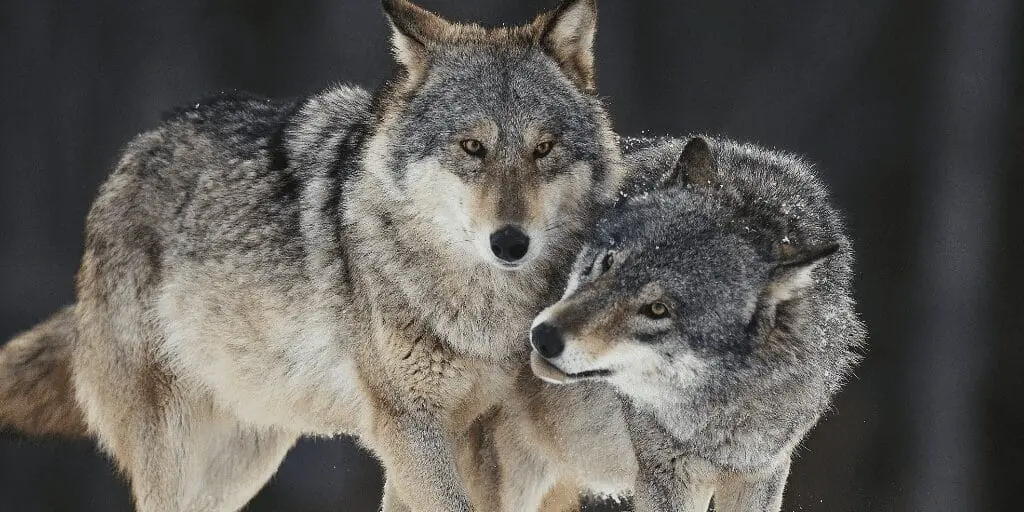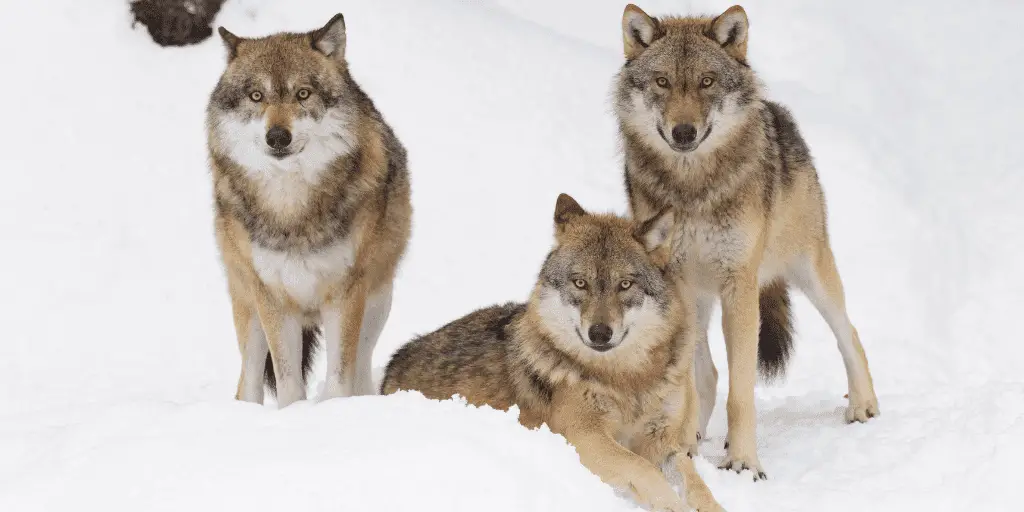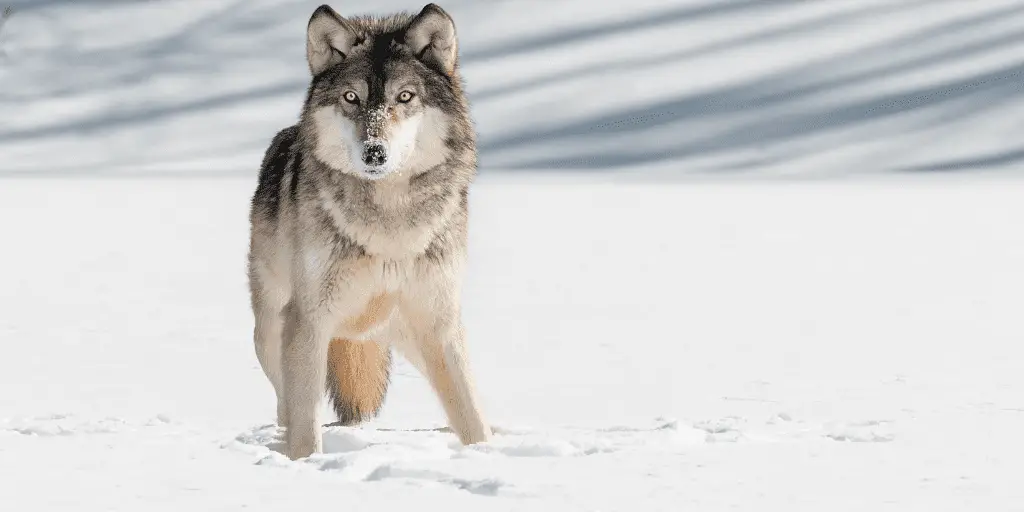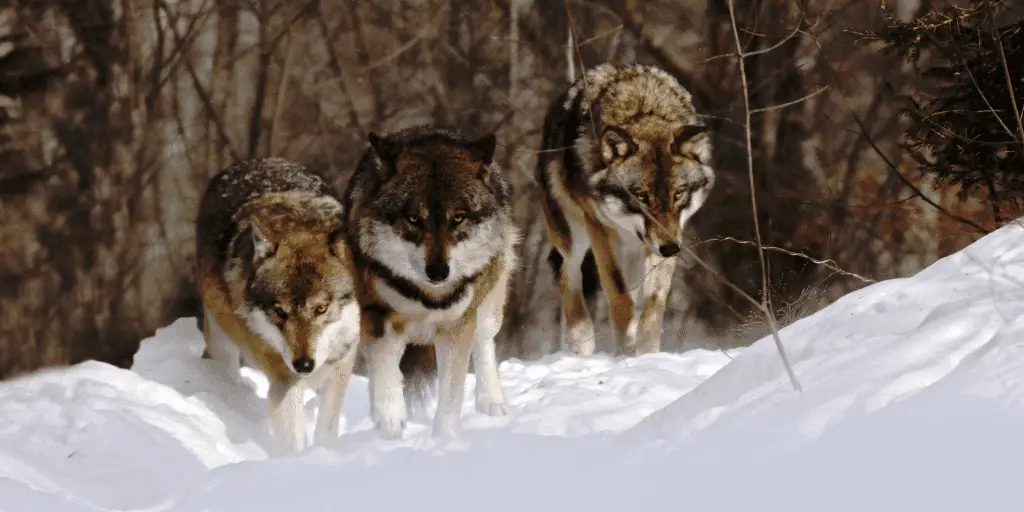Discover the truth about wolves in winter: do they hibernate or not? Uncover the fascinating behaviors of these resilient predators as they navigate the challenges of the cold season. Learn how their survival strategies impact the ecosystem and what sets them apart from other wildlife.
Key Takeaways:
- Wolves do not hibernate during winter; instead, they adapt their hunting strategies and social dynamics to thrive in the harsh conditions, using their keen senses and physical endurance to track and hunt prey effectively in the snow.
- The social structure of wolf packs, with a clear hierarchy and cooperative hunting, becomes crucial for survival in winter, as it ensures efficient hunting and resource sharing among pack members.
- Wolves possess physical adaptations to the cold, such as thicker fur and large, padded feet, which allow them to conserve energy and maintain body heat, enabling them to remain active throughout the winter months.
- As apex predators, wolves play a vital ecological role during winter by controlling prey populations and contributing to nutrient cycling, which supports the health and balance of the ecosystem.
- Conservation efforts are essential for the future of wolves, as they face challenges from climate change, habitat loss, and human-wildlife conflict, with strategies including protected areas, legal protections, and community-based initiatives being key to their continued survival.
Do Wolves Hibernate?
Wolves do not hibernate; they adapt their hunting strategies and remain active throughout winter to maintain their high metabolic needs.
| Aspect | Details |
| Activity in Winter | Wolves remain active throughout winter, adapting their hunting strategies and social dynamics to thrive in harsh conditions. |
| Hunting and Feeding | Adapt hunting strategies for efficient predation in snow; use cooperative pack hunting to take down larger prey and ensure food sharing among members. |
| Physical Adaptations | Develop thicker fur for insulation, large padded feet for snow traversal, and physiological adjustments for energy conservation and heat maintenance. |
| Social Structure | Pack hierarchy and cooperation are crucial for efficient hunting and survival, with clear leadership roles and collective efforts in tracking and hunting prey. |
| Ecological Role | Act as apex predators, controlling prey populations and contributing to nutrient cycling, supporting ecosystem health and balance. |
| Conservation Challenges | Face threats from climate change, habitat loss, and human-wildlife conflict; require protected areas, legal protections, and community-based conservation efforts for their survival. |
Wolves’ Winter Behavior

Wolves are creatures of resilience and adaptability, particularly when it comes to facing the harsh realities of winter. As the snow blankets the ground and the temperatures drop, these animals demonstrate a remarkable ability to thrive in conditions that would be challenging to many other species.
Their winter behavior is a testament to their evolutionary prowess, showcasing a suite of adaptations that allow them to not only survive but also maintain their role as apex predators within the ecosystem.
Hunting and Feeding Strategies in the Cold
When winter tightens its grip, wolves adjust their hunting and feeding strategies to match the changing environment. They may use deep snow to their advantage, hampering the movement of prey like deer and elk, which become more vulnerable in these conditions.
The wolves’ keen senses and physical endurance are fine-tuned for such conditions, allowing them to track and pursue their prey with remarkable efficiency.
Pack hunting becomes even more critical during these times. The collective effort ensures that the wolves can take down larger and more resilient prey.
The pack’s success hinges on each member playing their part, from the strategic chase to the final takedown. This cooperative hunting strategy is essential for their survival, ensuring that each member of the pack gets the nourishment needed to endure the winter months.
Pack Dynamics and Leadership in Winter
The social structure of a wolf pack is both complex and fascinating, with a clear hierarchy that is especially important during winter. The alpha wolves take the lead in decision-making, guiding the pack to areas rich in prey and making strategic calls on when and where to hunt.
Winter can test the pack’s unity and strength, as resources become scarce and the need for cooperation becomes paramount.
Social cohesion is crucial for survival, with each wolf supporting the others, sharing food, and taking on roles that benefit the pack as a whole.
Communication, through body language and vocalizations, plays a vital role in maintaining order and cohesion within the pack. Leadership disputes may arise, but the pack’s survival depends on a quick resolution and a clear hierarchy.
Territorial Behavior and Range Adjustments
Wolves are territorial animals, and winter presents unique challenges to maintaining these territories. Packs may adjust their ranges in response to prey movements, snow depth, and the need for shelter.
Scent marking becomes even more critical as visual markers disappear under the snow. These scent posts communicate vital information about territorial boundaries to other wolves and are essential in avoiding conflict with neighboring packs.
Territory sizes can fluctuate with the seasonal availability of resources, demonstrating the wolves’ adaptability. They balance the need to defend their established territory with the necessity of following prey migrations, showcasing their strategic intelligence and deep understanding of the landscape they inhabit.
Adaptations to Extreme Cold
Wolves are well-equipped to handle the biting cold of winter. Their fur grows thicker, with a dense undercoat that insulates against the chill.
Their large, padded feet act like snowshoes, distributing their weight and allowing them to move efficiently across the snow. Metabolic adjustments play a role as well, as wolves conserve energy during food scarcity and balance their energy expenditure between hunting and staying warm.
Social behaviors, such as huddling together, are also vital for conserving heat. These group strategies, combined with individual adaptations, form a comprehensive system that allows wolves to withstand the extreme cold and thrive during the winter months.
Wolves possess an exceptional sense of direction and spatial awareness, which is crucial for navigating the winter landscape. They rely on environmental cues, such as wind patterns and the position of the sun, to find their way. Established trails and landmarks are etched into their memory, guiding them to hunting grounds and shelter.
Human-altered landscapes present new challenges and opportunities for wolves in winter. Roads and settlements can disrupt their natural movement patterns, but wolves are quick to adapt, learning to navigate around these obstacles. Their ability to overcome these adversities is a clear indication of their resilience and intelligence, further cementing their status as masterful survivors of the winter world.
Why Wolves Do Not Hibernate?

When the chill of winter sets in, many animals tuck themselves away in a cozy state of hibernation. But not wolves. These majestic creatures don’t curl up for a long winter’s nap, and there’s a fascinating interplay of biology and ecology behind why they remain on the prowl even in the coldest months.
The Biology of Non-Hibernation
Wolves are built for a life on the move. Their bodies are fine-tuned machines that require a steady influx of energy to maintain their high metabolic rates.
Unlike true hibernators, wolves don’t have the ability to slow their metabolism down to a near standstill, nor do they have the capacity to store vast amounts of energy in the form of fat to last through the winter. Instead, wolves have a different strategy: they continue to hunt and consume food throughout the season.
Their thick fur coats are marvels of natural insulation, allowing them to withstand freezing temperatures. Beneath the surface, a wolf’s physiological makeup is all about sustaining a high-energy lifestyle.
They have a heart and lungs that support vigorous activity, and their digestive systems are designed to process large quantities of food quickly. This is because a wolf’s survival hinges on its ability to chase and take down prey, activities that demand a constant supply of energy.
Remaining active during the winter months also has ecological benefits. By continuing to hunt, wolves play a crucial role in controlling the populations of their prey, such as deer and elk.
This not only prevents overgrazing but also ensures that only the fittest individuals survive, which can lead to healthier prey populations in the long run. Moreover, by maintaining their territorial claims throughout the year, wolves avoid the risk of encroachment from rivals, a critical aspect of their survival strategy.
Active Predation and Winter Ecology
The impact of wolves on the winter ecosystem extends far beyond their immediate survival needs. As apex predators, wolves’ hunting activities shape the landscape around them. Their presence can influence the behavior and distribution of other species, creating a cascade of ecological effects.
For instance, when wolves hunt, they help to keep herbivore populations in check, which in turn allows vegetation to thrive. This not only changes the physical environment but also supports a wide range of other wildlife that depends on healthy plant life.
Wolves’ predation patterns also contribute to the cycling of nutrients. The remains of their meals become a food source for scavengers and decomposers, which helps to fertilize the soil and promote plant growth. This nutrient cycling is a vital part of the ecosystem’s health, particularly in the nutrient-poor winter months.
The continuous activity of wolves during winter underscores their role as keystone predators. Their hunting not only sustains them but also plays a pivotal role in maintaining the balance and health of the ecosystem.
The intricate dance between predator and prey continues unabated by the snow and ice, a testament to the wolves’ adaptability and the resilience of the natural world. Far from being a time of dormancy, winter for wolves is a season of dynamic ecological interaction, where their active participation shapes the living landscape around them.
Comparative Adaptation Strategies

The natural world is a stage for a myriad of survival strategies, each tailored to the unique demands of different environments and seasons. Winter, with its harsh conditions, has led to a fascinating array of adaptations among various species.
Wolves, with their own distinctive approach to the cold months, provide a stark contrast to other animals that have evolved to either escape or sleep through the winter’s challenges.
Hibernation vs. Active Survival
When the world turns white with snow, many creatures like bears and ground squirrels tuck themselves away in a deep sleep known as hibernation. This remarkable state slows their metabolism and drops their body temperature, conserving energy when food is scarce. Hibernators are the ultimate savers, stretching their resources through the lean times.
Wolves, on the other hand, don’t have the luxury of snoozing through the snowflakes. They remain on the prowl, their thick fur insulating them against the biting cold, their social structure enabling cooperative hunting to sustain the pack.
Wolves have a cardiovascular system that efficiently manages body heat, and their paws are adapted to tread on snow without losing traction. While hibernators conserve, wolves persevere, showcasing the diversity of life’s solutions to the same environmental challenge.
Migration as a Survival Strategy
Birds are the poster children for migration, traveling thousands of miles to find warmer climates when winter looms. This grand journey allows them to exploit different ecosystems seasonally, avoiding the brunt of winter’s scarcity. Migration is a gamble, fraught with hazards, but the payoff is a warmer climate with abundant resources.
Wolves, conversely, are the embodiment of homebodies. They stick to their established territories year-round, their survival strategy deeply rooted in familiarity with their local environment.
This territorial fidelity means wolves must adapt to the changing seasons within the confines of their home range. They don’t escape winter; they meet it head-on, with a deep knowledge of their territory that helps them find prey even in the toughest conditions.
Adaptations of Other Predators in Winter
The winter world is not devoid of life; it’s a stage for the survival of the fittest. Foxes, with their keen hearing, can detect prey beneath the snow. Lynx, with their large paws, walk atop snowdrifts to hunt. Birds of prey soar above, their sharp eyes spotting the movements of rodents in the white expanse.
Wolves share this cold world with these predators, each with its own set of winter adaptations. While wolves rely on their pack for successful hunts, solitary predators like the lynx depend on stealth and agility. The diversity of hunting strategies and social behaviors among these predators underscores the complexity of the winter ecosystem and the various niches each species fills.
The Impact of Climate Change on Winter Survival Strategies
Climate change is rewriting the rules of winter survival. Altered snowfall patterns, shifting temperatures, and changing prey distributions are challenging the traditional strategies of many species.
Wolves are adaptable, but they too face new pressures as the climate crisis reshapes their habitats. Their resilience will be tested as they navigate an environment in flux, with the stability of their prey and the integrity of their ecosystems hanging in the balance.
Technological and Human Impacts on Wildlife Winter Behaviors
Human expansion and technology have left indelible marks on the winter behaviors of wildlife. Wolves encounter roads where there were once uninterrupted forests, and their prey are often displaced by urban sprawl. Technological advancements, however, also offer a glimmer of hope. Tracking and monitoring devices have become crucial in studying wolf behavior and informing conservation efforts.
The interplay between human activity and wildlife conservation is delicate. As wolves adapt to the changing winters, so must our strategies for ensuring their survival. By understanding the intricate dance of adaptation and survival, we can better appreciate the resilience of wolves and the importance of safeguarding the environments that sustain them through the coldest months.
Wolves vs. Other Winter Animals

In the frosty realms where the snow blankets the earth and the chill of winter bites at every creature’s heels, wolves emerge not just as survivors but as masters of the cold.
Their lives and behaviors contrast sharply with other animals that share these icy landscapes, each with its own set of survival tactics. By examining wolves alongside their winter companions, one can truly appreciate the tapestry of life that thrives in the harshest of seasons.
Symbiotic Relationships and Competition for Resources
Wolves are not solitary players in the winter wilderness; they are part of a complex network of relationships with other animals. Their hunting prowess, for instance, is a boon to scavengers such as ravens and foxes, who often feast on the remains of wolves’ prey. This symbiotic relationship underscores the wolves’ role in supporting a variety of life even in the dead of winter.
However, the presence of wolves also means competition, especially with other predators like coyotes and mountain lions. These competitors vie for the same prey, but wolves often come out on top due to their pack hunting strategies and superior communication skills.
Their success in hunting also influences the behavior and distribution of other predators, who may alter their hunting grounds to avoid direct competition with wolves.
The Role of Wolves in Winter Ecosystem Health
Wolves do more than just survive the winter; they shape the very ecosystem around them. Their predation patterns create what ecologists call trophic cascades—a series of chain reactions that ripple through the food web.
By preying on herbivores, wolves help keep plant populations in check, which in turn maintains the diversity of the landscape. A classic example is the reintroduction of wolves to Yellowstone National Park, which led to a reduction in elk populations, allowing willow and aspen trees to flourish, which then supported a greater variety of wildlife.
This ecological impact of wolves in winter is profound. They help maintain the balance of nature, ensuring that no one species dominates to the detriment of others. Their role is so significant that their absence can lead to an imbalance that affects the entire ecosystem.
Adaptations of Prey Species in Response to Wolves
The presence of wolves in winter landscapes forces prey species to adapt in order to survive. Deer and elk, for instance, may form larger herds for protection or alter their feeding habits to avoid areas where wolves are known to hunt. They might also select terrain that offers better visibility or escape routes, such as ridgelines or open fields.
This evolutionary arms race between predator and prey is a dance of survival, with each step by the wolves met with a countermove by their prey.
The pressure exerted by wolves drives the prey species to evolve, developing keener senses, faster speeds, and more agile movements. It’s a dynamic interaction that showcases the resilience and adaptability of life in the face of relentless predation.
Conservation Efforts and the Future of Wolves in Winter Landscapes
The future of wolves in winter landscapes is not just a matter of nature taking its course; it’s also in the hands of humans. Conservation efforts are crucial in ensuring that wolves continue to play their role in the ecosystem.
Challenges such as climate change, habitat loss, and human-wildlife conflict threaten their survival, but strategies like establishing protected areas, enforcing legal protections, and promoting community-based conservation initiatives offer hope.
Public education and engagement are also key to the future of wolves. Programs that foster understanding and coexistence can help mitigate conflicts and build support for wolf conservation. By working together, it’s possible to create a future where wolves continue to roam the winter landscapes, maintaining the delicate balance of these ecosystems for generations to come.
Conclusion
In conclusion, wolves do not hibernate during the winter months; instead, they exhibit remarkable adaptability and resilience to the challenges posed by the cold season. Their hunting and feeding strategies, social dynamics, territorial behavior, and physical adaptations enable them to thrive as apex predators, maintaining ecological balance through active predation.
Wolves’ continuous activity during winter plays a crucial role in controlling prey populations, supporting a diverse ecosystem, and contributing to nutrient cycling. While other species may hibernate or migrate to cope with winter, wolves persevere in their established territories, showcasing a unique survival strategy deeply rooted in their biology and ecological role.
Despite the pressures of climate change and human expansion, wolves’ adaptability offers hope for their future, underscoring the importance of conservation efforts to ensure these keystone predators continue to shape and sustain their winter habitats.









